6 ways to apply the principles of design to your life
Designers need to work better at living better.
From the archive: This article was originally published in 2016.
We dedicate most of our lives to client briefs – from developing the perfect logo design to creating show-stopping vector art – so why not apply some of that well-honed skill, focus and clear design thinking to making sure we get the most from our own lives?
"It's the most important brief you'll ever have," says Vince Frost, who's benefitted so much from this concept that he's written a typographic self-help guide, Design Your Life.
Here Frost shares six tips on how best to apply the principles of design to our personal lives – and become better designers in the process.
01. Create new habits of working and living
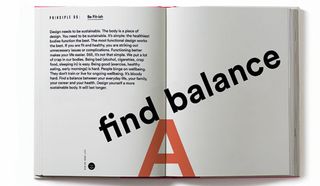
"Why design your life? To be the best you can possibly be," says Frost. "So many designers haven't designed their lives – they're just going to let it happen, or focus on their career to the detriment of their own wellbeing. Over time, it has an effect on your creativity and ability to be sustainable."
"It's about creating new habits of working and living: not just for now, but for the long-term. A lot of it's pretty straightforward. It's about controlling your destiny as much as you possibly can, instead of just letting it happen."
02. Make incremental changes
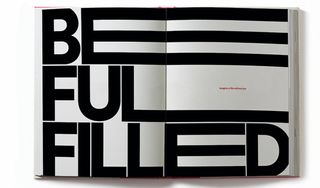
"It doesn't have to be perfect now: you don't have to get it right 100 per cent straight away. That's intimidating. It's like trying to be fit – you don't do it in one day."
"I looked at my health and stopped drinking alcohol. For me, it also worked to stop drinking coffee, eat in moderation and exercise regularly. Also, a positive attitude towards life: I've always been pretty positive, but I've become more aware that my output – my attitude, my aura – affects people around me, so I'm working on improving on that."
"But I'm the kind of person who wants to fix it now. I get incredibly frustrated with the realisation that I can't. Instead, I'm focusing on doing it gradually over time."
03. Make time for it
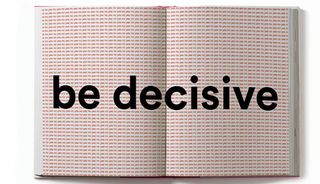
"It isn't like a client brief where you have a set deadline, someone's paying for you to do something and you have to deliver. Unless a big crisis is happening, you tend not to treat your own life with that same kind of urgency or the same respect you give a client."
You tend not to treat your own life with that same kind of urgency or respect you give a client
"For me, there would always be something coming up – some crisis, or an HR issue or the kids would be sick and I'd have to park it. But eventually I just started putting some stuff down…"
04. Start by sketching out your life
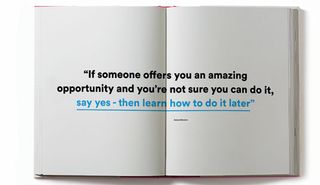
"Think of it like a client job: here's the opportunity, here's the brief, here's the timeline; then spend your time thinking about different ideas, asking questions and mapping out what the possible solutions could be."
"Try to distance yourself. Look at your life objectively, and give yourself the time you need to sit down and write down all the things you like; that are and aren't working for you; that could be better."
"Write down your dreams. What would you like your life to look like? Where do you want to be? Amplify those areas that give you pleasure or work for you. It's like a brainstorm and you can do it by yourself or with a friend, colleague or mentor. Just give it the time and the focus that it deserves."
"You might not get it right away. You have to keep coming back to it, which is fine. Just don't go: "Oh fuck it, this is too hard." Keep chipping away."
05. Change your life, and work follows
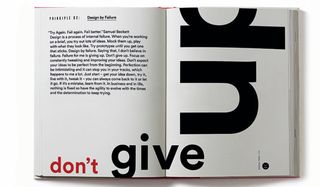
"The things that I find difficult, although not impossible, involve shifting from working inside my business as a designer, to working on my business as the owner and CEO."
"Issues around HR – understanding how to look after my people, or get the right people – are really important."
"The number one thing was being very clear about my vision for the business and what our purpose is. I've had a lot of training, but it still hurts my head. It's left-brain thinking versus the right."
06. Don't beat yourself up
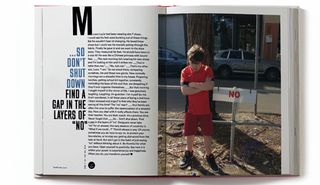
"If you lose momentum, just acknowledge that it's bound to happen, and then go back to the life plan you mapped out and remind yourself that there are certain things you need to be applying. Don't beat yourself up about going off track."
"The most important is to trust yourself. Your life could turn out great; it could be terrible. It could be a whole bunch of things. But why not design your life? I think proactively driving your destiny or your happiness can make a big difference."
This article first appeared inside Computer Arts. Subscribe to Computer Arts.
Liked this? Try these...

Thank you for reading 5 articles this month* Join now for unlimited access
Enjoy your first month for just £1 / $1 / €1
*Read 5 free articles per month without a subscription

Join now for unlimited access
Try first month for just £1 / $1 / €1
Get the Creative Bloq Newsletter
Daily design news, reviews, how-tos and more, as picked by the editors.

Julia is editor-in-chief, retail at Future Ltd, where she works in e-commerce across a number of consumer lifestyle brands. A former editor of design website Creative Bloq, she’s also worked on a variety of print titles, and was part of the team that launched consumer tech website TechRadar. She's been writing about art, design and technology for over 15 years.